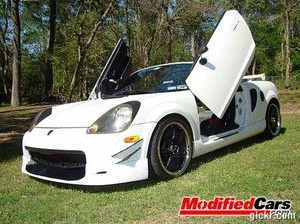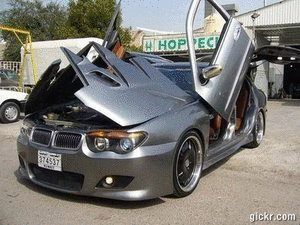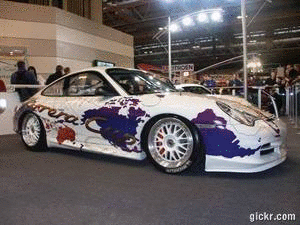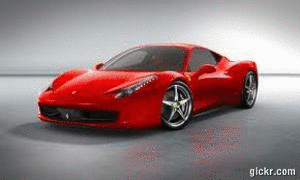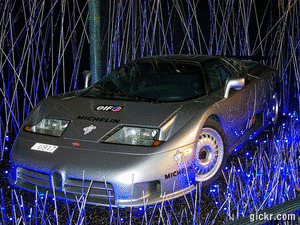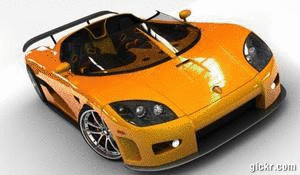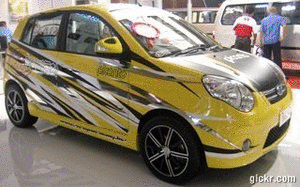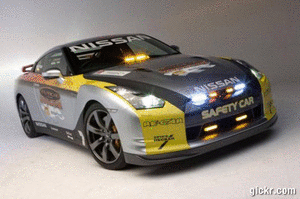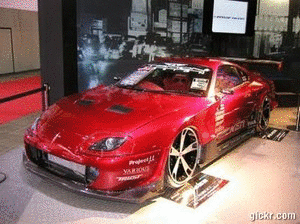 Ketua Umum Gabungan Industri Kendaraan Bermotor Indonesia (Gaikindo), Sudirman MR menyatakan, produsen otomotif membutuhkan dana setidaknya sekitar USS 50 juta untuk memproduksi mobil nasional yang harganya murah, seperti yang diwacanakan pemerintah.
Ketua Umum Gabungan Industri Kendaraan Bermotor Indonesia (Gaikindo), Sudirman MR menyatakan, produsen otomotif membutuhkan dana setidaknya sekitar USS 50 juta untuk memproduksi mobil nasional yang harganya murah, seperti yang diwacanakan pemerintah."Dana itu hanya untuk membeli robot perakit dan mesin pengelas, dan pengecatan, belum sampai pada tahap produksi massal," ujarnya di Jakarta, akhir pekan lalu.
Dia mengungkap, akibat besarnya investasi, membuat produsen memilih sikap menunggu kebijakan pemerintah. Alasannya, kalangan produsen khawatir investasi akan menguap jika produsen terjun langsung tanpa ada kejelasan peraturan dari pemerintan. "Kalau peraturan feasible baru kita bicara produksi massal. Apa yang dapat diberi oleh pemerintah kami belum tahu," jelasnya.
Sudirman mengaku, definisi mobil murah dan ramah lingkungan ("low cost and green car") yang tengah digodok pemerintah belum jelas. Dia meminta, pemerintah mengajak Gaikindo berdiskusi dalam merusmuskan peraturan mobil murah.
Dalam kesempatan itu, Sudirman juga mengungkap. Gaikindo memangkas target ekspor mobil dalam bentuk utuh (completely built up/CBU) dari 100 ribu unit menjadi sekitar 65 ribu unit tahun ini, menyusul rendahnya realisasi ekspor sampai Agustus. "Saya rasa agak berat untuk capai 100 ribu. Tadi teman-teman sudah bicara ekspor di angka 65 ribuan unit," imbuh dia.
Berdasarkan data Gaikindo, ekspor mobil CBU sampai Agustus n.-iik 60.1% menjadi 49.427 unit, dibanding periode sama tahun lalu 30.858 unit.
Dia menerangkan, perekonomian negara tujuan ekspor belum sepenuhnya pulih dari tekanankrisis finansial global 2009. Ini membuat pabrikan mobil lokal sulit menggenjot ekspor.
Walau begitu, tutur Sudirman, kinerja ekspor mulai bangkit memasuki paruh kedua tahun ini. Buktinya, pada Agustus lalu ekspor mobil meroket 122,6 persen menjadi 7.279 unit dibandingkan Agustus 2009 yang hanya 3.269 unit.
Adapun mobil yang diekspor terurai atau completely knocked down (CKD)sepanjang Januari-Agustus 2010 mencapai 38.238 unit dan ekspor komponen otomotif mencapai 237.756 unit
Senada dengan Sudirman, Chief External Affairs PT Toyota Motor Manufacturing Indonesia (TMMIN), produsen Toyota di Indonesia, Irwan Priyantoko menyatakan, ekspor mobil mulai meningkat memasuki semester II. Ini terlihat dari lonjakan order dari beberapa wilayah seperti Timur Tengah dan Asean.
"Apalagi pada bulan lalu kami mendapat tambahan order Fortuner sebanyak 1.000 unit ke beberapa negara Timur Tengah, sehingga ekspor otomatis terdongkrak," kata Irwan.
Irwan memprediksi tren peningkatan ekspor akan terus berlanjut hingga akhir tahun. Manajemen TMMIN menargetkan total ekspor pada 2010 dapat mencapai 41.400 unit dari total produksi TMMIN 108 ribu unit.
Beberapa mobil rakitan lokal yang diekspor dalam bentuk utuh antara lain Suzuki APV, Toyota Kijang Innova, dan Daihatsu Gran Max, Toyota Avanza, Toyota Fortuner, Toyota Rush; Suzuki APV, Suzuki Swift; dan Honda Freed. Ekspor mobil mengarah ke beberapa negara, seperti Malaysia, Thailand, Jepang, Mesir, Yaman, Uni Emirat Arab, Kuwait, Mesir, Oman, Arab Saudi, dan Afrika Selatan.
Target DAIHATSU
Di sisi lain, Sudirman yang juga menjabat wakilpresiden direktur PT Astra Daihatsu Motor (ADM), produsen mobil Daihatsu dan Toyota menerangkan, ADM menargetkan produksi tahun ini dapat menembus 280 ribu unit, naik 21,4% dibanding 2009 sekitar 220 ribu unit. "Produksi naik selaras dengan bergairahnya pasar mobil domestik," ujarnya.
Sudirman menuturkan, produksi sempat menyentuh angka 19.810 unit, teredah sepanjang tahun ini. ADM memproduksi 6.584 unit Daihatsu untuk domestik dan 590 unit untuk ekspor. Selain itu, produksi merek Toyota di pabrik ADM mencapai 9.740 unit dan Toyota untuk ekspor 2.266 unit.
Menurut Dia, rendahnya produksi pada bulan lalu tak lepas dari pendeknya hari kerja akibat libur Lebaran. Kondisi ini membuat produksi tidak dapat digenjot, sehingga pengiriman mobil ke dealer berkurang. "Konsumen juga sedang konsentrasi untuk Lebaran, sehingga pasar mobil lesu. Tapi, produksi pada Oktober akan balik ke angka 20 ribu unit," jelas dia.
Hingga September 2010, produksi ADM mencapai 211.814 unit. Alokasi merek Daihatsu untuk pasar domestik mencapai 75.507 unit dan ekspor 4.995 unit. Sedangkan produksi Toyota mencapai 109.204 unit untuk pasar domestikdan 22.108 unit untuk ekspor.
ADM memproduksi Toyota Avanza, Toyota Rush, Daihatsu Xenia, Daihatsu Terios, dan Daihatsu Gran Max. Pabrik ADM di Sunter, Jakarta Utara, memiliki kapasitas terpasang 211 ribu unit, terbesar di Tanah Air.
Sudirman menyatakan, ADM akan meningkatkan kapasitas pabrik menjadi 286 ribu unit mulai semester 11-2010. Saat ini proses ekspansi sudah mencapai 70%. "Ekspansi kemungkinan akan rampung pada Februari tahun depan, lebih cepat dibanding proyeksi semula, yaitu Maret," tegas dia.
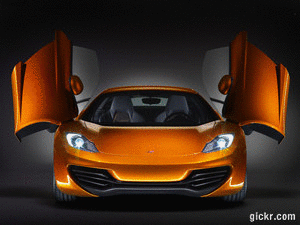

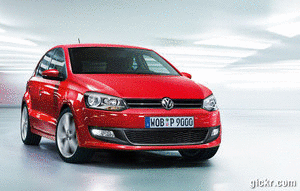
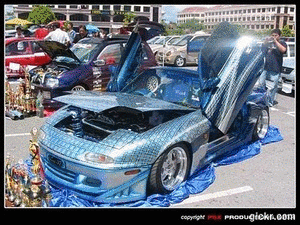
 Sudah menjadi rahasia umum kalau pasar mobil di Indonesia di dominasi oleh produsen mobil asal negeri matahari terbit. Jepang bahkan menguasai 95 persen dari seluruh populasi mobil yang ada di tanah air.
Sudah menjadi rahasia umum kalau pasar mobil di Indonesia di dominasi oleh produsen mobil asal negeri matahari terbit. Jepang bahkan menguasai 95 persen dari seluruh populasi mobil yang ada di tanah air.




































 Saudi Arabia has signed an agreement with Japan's Isuzu Motors to set up a car and truck manufacturing factory, costing around 500 million riyals ($133 million), state news agency SPA said.
Saudi Arabia has signed an agreement with Japan's Isuzu Motors to set up a car and truck manufacturing factory, costing around 500 million riyals ($133 million), state news agency SPA said.









